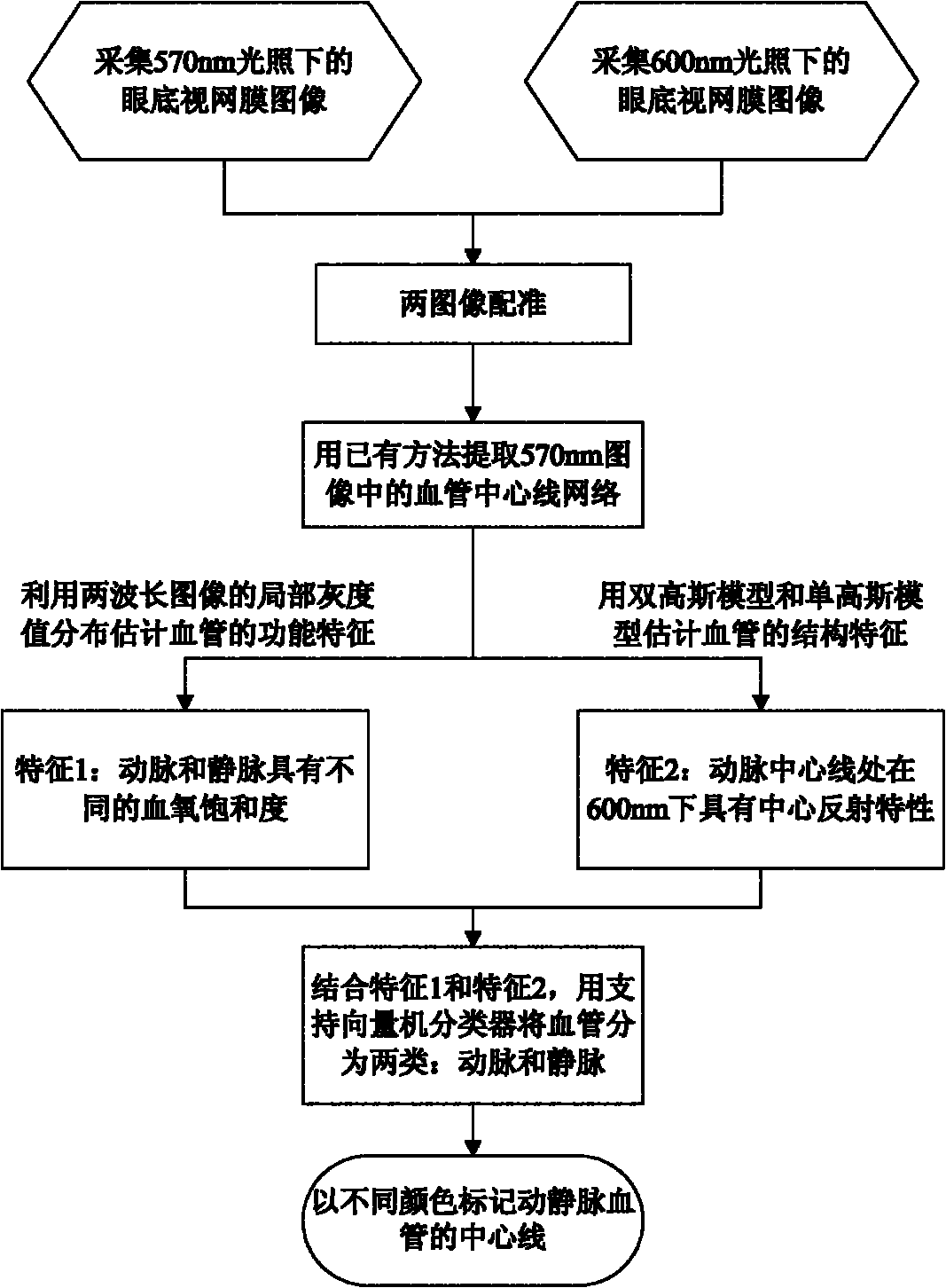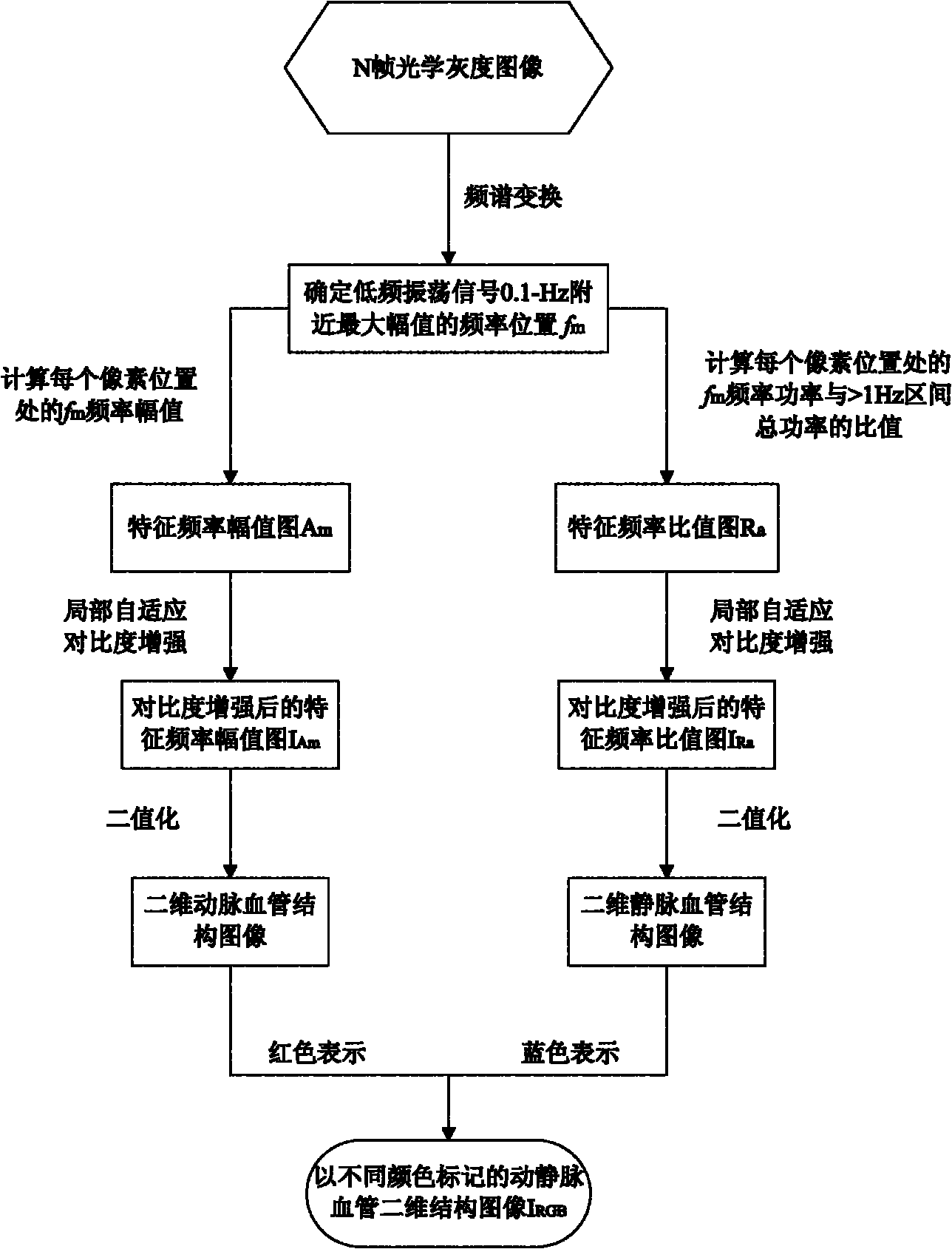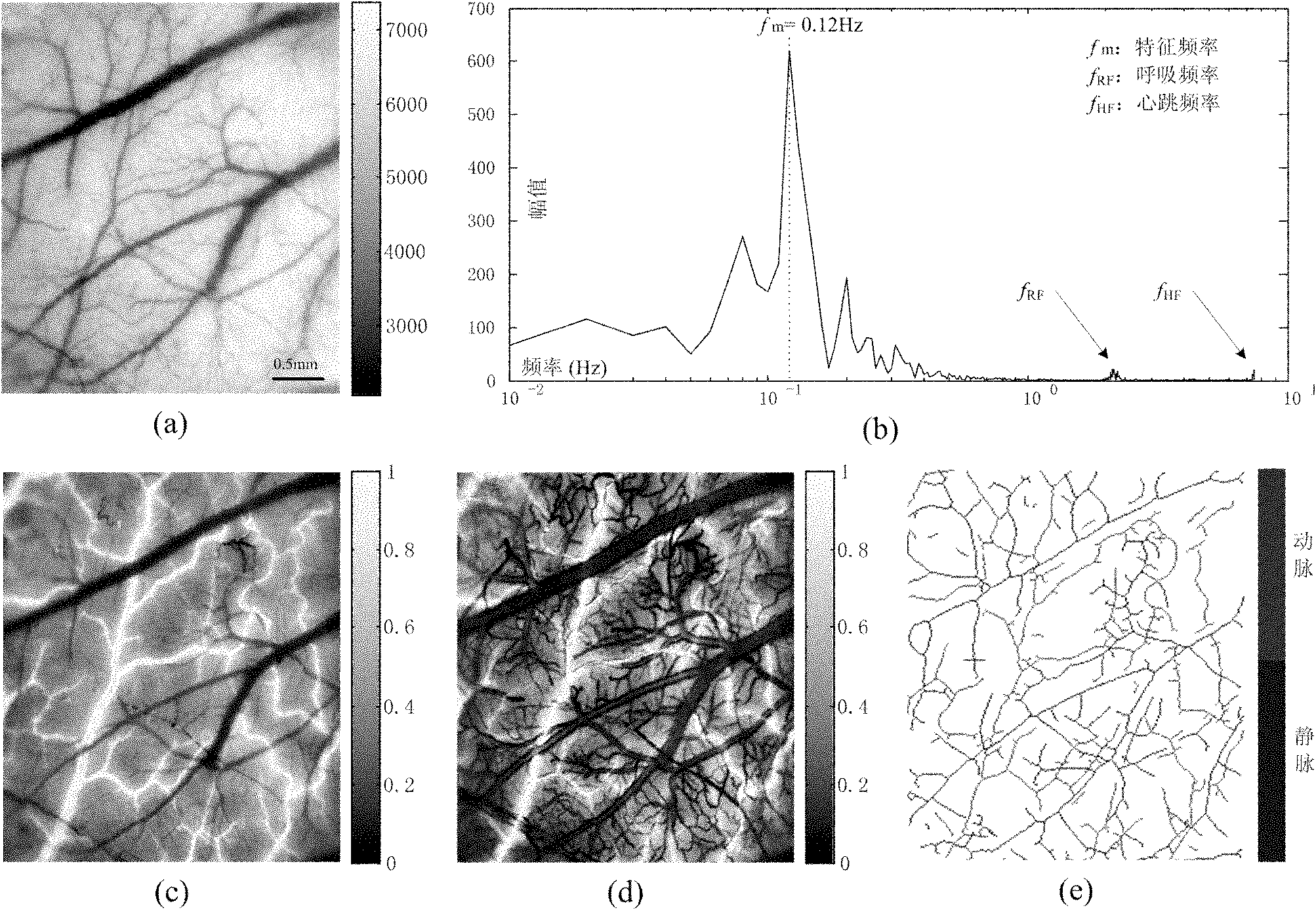Endogenous optical imaging method for automatically separating arteries and veins
A technology of automatic separation and optical imaging, applied in the field of biomedical imaging
- Summary
- Abstract
- Description
- Claims
- Application Information
AI Technical Summary
Problems solved by technology
Method used
Image
Examples
Embodiment Construction
[0033] figure 2 For the general flow chart of the present invention, the present invention comprises the following steps:
[0034] 1. Irradiate narrow-band quasi-monochromatic light onto the measured object, and use a CCD or CMOS camera to continuously collect N frames of optical images reflected by the measured object with the same exposure time and frame interval through the optical imaging system;
[0035] 2. Calculate the average time series according to formula 1 The average gray value of the nth point in :
[0036] formula one
[0037] 3. Use the fast Fourier transform algorithm to convert the average pixel time series obtained in the second step Transform to the spectral domain and determine the frequency value with the largest magnitude in the frequency interval (0.05Hz, 1Hz) f m ;
[0038] 4. Use the fast Fourier transform algorithm to transform each pixel time series into the spectral domain, and calculate the characteristic frequency of each pixel tim...
PUM
 Login to View More
Login to View More Abstract
Description
Claims
Application Information
 Login to View More
Login to View More - R&D
- Intellectual Property
- Life Sciences
- Materials
- Tech Scout
- Unparalleled Data Quality
- Higher Quality Content
- 60% Fewer Hallucinations
Browse by: Latest US Patents, China's latest patents, Technical Efficacy Thesaurus, Application Domain, Technology Topic, Popular Technical Reports.
© 2025 PatSnap. All rights reserved.Legal|Privacy policy|Modern Slavery Act Transparency Statement|Sitemap|About US| Contact US: help@patsnap.com



